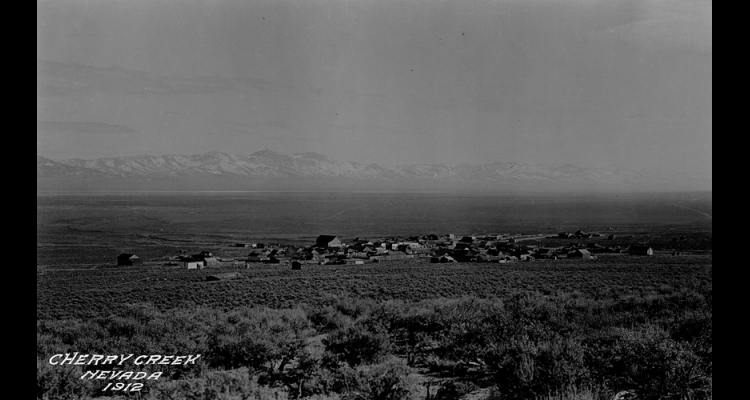Cherry Creek
Like many mining towns in Nevada, the story of Cherry Creek in White Pine County is one of boom and bust. It sprang up shortly after Peter Corning and John Carpenter located the nearby Tea Cup claim in 1872. Many mining companies flocked to the area, and the town grew until it busted just three years later because of dwindling ore supplies.
By 1882, new ore discoveries had again made Cherry Creek a bustling town. Some estimate the population was as high 6,000, with 1,800 being permanent residents. Other experts say the town was probably much smaller, with the census of 1880 reporting only 566 residents. Voting lists at the time indicated only a few hundred voters. But regardless of the exact population, there is little doubt that Cherry Creek was roaring during its peak, with twenty-eight saloons, five mercantile stores, two clothing stores, and a drug store. There were also several restaurants, two dairies, and a brewery.
Stage lines were established to transport freight and passengers to and from the town. Transportation quickly became a big industry in Cherry Creek, and one freighter employed as many as twenty-four mules on his line. In 1906, the Nevada Northern Railway passed just outside of Cherry Creek, eventually reducing the need for stage lines.
Early Cherry Creek had a mile-long horse track outside of town, complete with grandstands to seat race attendees. Other popular forms of recreation were mine drilling contests, bronco riding, and target practice at the Cherry Creek Rifle Club.
The town busted again in 1883, and the population deteriorated over time. There would be other booms and busts well into the 1900s, but the town's character and population would never again equal that of its heyday.
Today, about twenty residents still live in Cherry Creek, and a solitary bar, called The Barrel Saloon, is still open for business.
Article Locations
Related Articles
Further Reading
None at this time.



